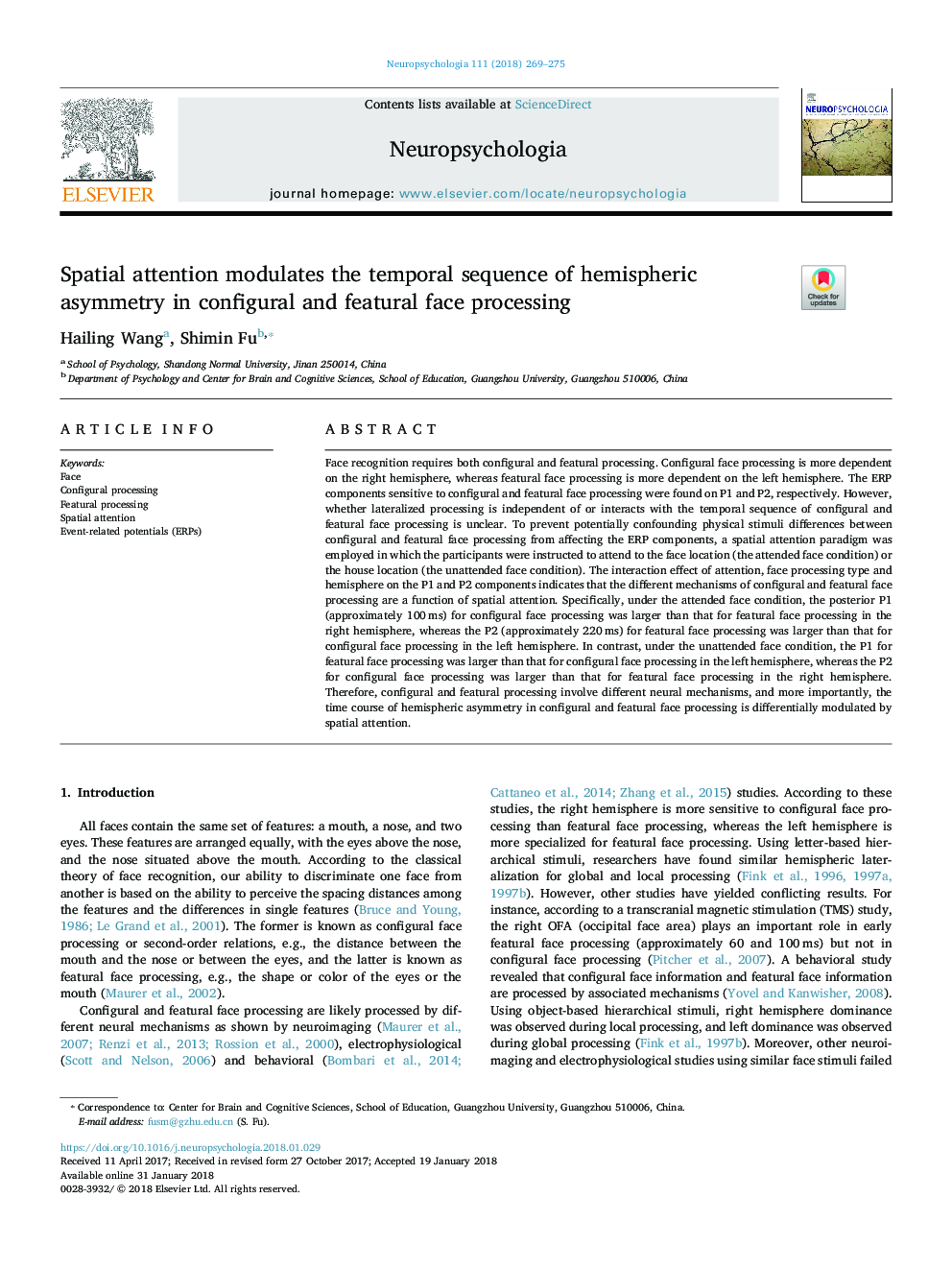| Article ID | Journal | Published Year | Pages | File Type |
|---|---|---|---|---|
| 7318007 | Neuropsychologia | 2018 | 7 Pages |
Abstract
Face recognition requires both configural and featural processing. Configural face processing is more dependent on the right hemisphere, whereas featural face processing is more dependent on the left hemisphere. The ERP components sensitive to configural and featural face processing were found on P1 and P2, respectively. However, whether lateralized processing is independent of or interacts with the temporal sequence of configural and featural face processing is unclear. To prevent potentially confounding physical stimuli differences between configural and featural face processing from affecting the ERP components, a spatial attention paradigm was employed in which the participants were instructed to attend to the face location (the attended face condition) or the house location (the unattended face condition). The interaction effect of attention, face processing type and hemisphere on the P1 and P2 components indicates that the different mechanisms of configural and featural face processing are a function of spatial attention. Specifically, under the attended face condition, the posterior P1 (approximately 100â¯ms) for configural face processing was larger than that for featural face processing in the right hemisphere, whereas the P2 (approximately 220â¯ms) for featural face processing was larger than that for configural face processing in the left hemisphere. In contrast, under the unattended face condition, the P1 for featural face processing was larger than that for configural face processing in the left hemisphere, whereas the P2 for configural face processing was larger than that for featural face processing in the right hemisphere. Therefore, configural and featural processing involve different neural mechanisms, and more importantly, the time course of hemispheric asymmetry in configural and featural face processing is differentially modulated by spatial attention.
Keywords
Related Topics
Life Sciences
Neuroscience
Behavioral Neuroscience
Authors
Hailing Wang, Shimin Fu,
